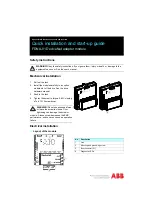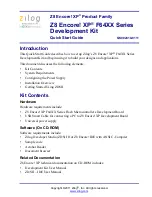
Configuring Control Modules and System Timing
Configuring control module redundancy
Stinger® FS/Stinger FS+ Getting Started Guide
5-15
Configuring control module redundancy
If two control modules are installed and both modules are available, the system
chooses one of the modules to be the primary control module when the system starts
up. If the Redundancy profile specifies that one of the controllers is preferred, the
system makes that control module primary. If no preference is configured in the
Redundancy profile, the system chooses the controller that was primary most
recently. If neither of these criteria apply, the system chooses the controller in the
second control module slot (slot 9).
Upon installation, the system default setting allows either control module to become
primary without agreement from the other control module, and does not specify a
preference for either control module to become primary. When two new control
modules are installed in a Stinger unit with default settings, the control module in
the first slot (slot 8) becomes primary. If you keep the default settings, no
configuration is required for control module redundancy. The default settings are
recommended for the current software version.
Note
To maintain administrative IP connectivity to the Stinger unit when the unit
transfers control to a redundant control module, the soft IP interface of the unit must
be properly configured and connections to the unit must use the address of the soft
interface. (See “Defining the soft IP interface for fault tolerance” on page 5-13.)
Overview of redundancy operations
The primary and secondary control modules use a heartbeat protocol to monitor each
other and maintain synchronized repositories of the system configuration stored in
the primary control module’s flash memory. If the primary control module resets, the
system switches over to the standby control module. The mechanism for switchover
is built into the control module hardware and allows the switchover to occur
instantaneously.
To maintain full functional redundancy, the primary and secondary control modules
have separate paths to each LIM and trunk module, as shown in Figure 5-7.
Figure 5-7. Redundant paths to each control module
The primary control module manages the LIMs and assumes all the normal controller
responsibilities of managing the unit and handling the call control and circuit
management functions.
Trunk
Module
Control
Module
LIMs
LPMs and 1:n LIM
switchover
redundancy
1:1 redundant
control modules
Trunk modules and
1:1 port switchover
redundancy
Trunk
Module
Control
Module
















































